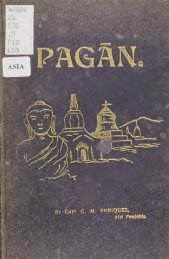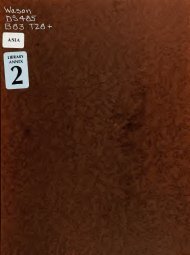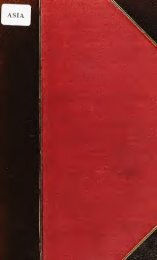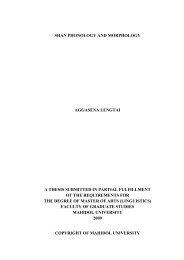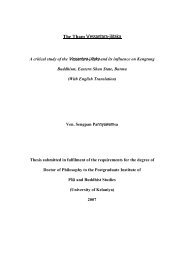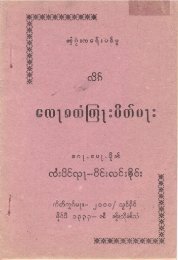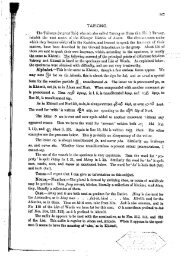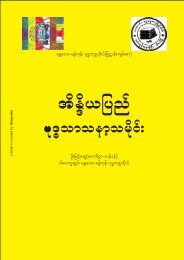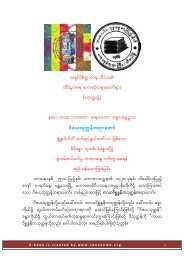The Tai Ahom National Council Memo Scheduling
The Tai Ahom National Council Memo Scheduling
The Tai Ahom National Council Memo Scheduling
Create successful ePaper yourself
Turn your PDF publications into a flip-book with our unique Google optimized e-Paper software.
All these go to prove that the <strong>Ahom</strong> did not loose their tribal identity due to their supposedmarriage<br />
with other local communities. Although it cannot be denied that some <strong>Ahom</strong>s had taken<br />
wives from non-<strong>Ahom</strong> communities, bit in general such theory is applicable to all societies<br />
throughout ages. <strong>The</strong>refore to find a people of “pure blood 100 p.c.” is to chase a chimera only.<br />
Even among the hill people who live in isolation there is sufficient admixture of blood. As J. P.<br />
Mills, the very well known author of <strong>The</strong> Ao Nagas says, “At the same time the Aos have<br />
probably received more admixture of actual Assamese blood than most Naga tribes” (p. 4 f.n.2).<br />
Similarly other tribes of North East India too received foreign blood. Yet for this reason nobody<br />
has questioned the distinct identity of these tribes. But in the case of the <strong>Ahom</strong>, the negative<br />
aspect of blood-mixture has always been highlighted and blown out of proportion by some non-<br />
<strong>Ahom</strong>s only to deprive the <strong>Ahom</strong> community, which is long striving to maintain its own identity,<br />
of its legitimate constitutional rights.<br />
<strong>The</strong> moot question is –Did the <strong>Ahom</strong> get mixed up with non-<strong>Ahom</strong>s by marriage? This<br />
question must have its answer in the light of two basic considerations –(1) the social system of<br />
the <strong>Ahom</strong> and (2) other historical and circumstantial evidences.<br />
In their social system the <strong>Ahom</strong> are an endogamous community but follow clan (phoid)<br />
exogamy so that they married from other <strong>Ahom</strong> clans and would not normally marry non-<strong>Ahom</strong><br />
brides. “<strong>The</strong> <strong>Ahom</strong>s are an endogamous community, but clan and lineage exogamy is strictly<br />
followed. Marriage within the sub-phoid and phoid is strictly prohibited.” ( Anthropological<br />
Survey of India Series, Assam Vol. XV, General Editor K .S. Singh, 2003, p.51) This is<br />
continuing even today.<br />
About the other, for the first 300 hundred years of their settlement in the Brahmaputra valley,<br />
they had no close contact with tribes other than the Mongoloid Barahi and Moran; while the<br />
Chutiya and the Kachari (also Mongoloid) who lived on either side of their state then were their<br />
political enemies. It is absurd to suppose that <strong>Ahom</strong> young men of marriageable age went to<br />
distant lands in search of their wives. It was after 1530 A.D. there appeared the opportunity for<br />
<strong>Ahom</strong> marriage with Kacharis, Chutiyas, Miris (all having tribal culture and characteristics),<br />
when these people became subjects of the <strong>Ahom</strong> kingdom. But <strong>Ahom</strong> history and family<br />
tradition do not speak of the <strong>Ahom</strong> marriage with Brahmins, Kalitas, Kayasthas or Scheduled<br />
Caste population, which was but a rarity. This is not an imagined theory but a fact of history.




